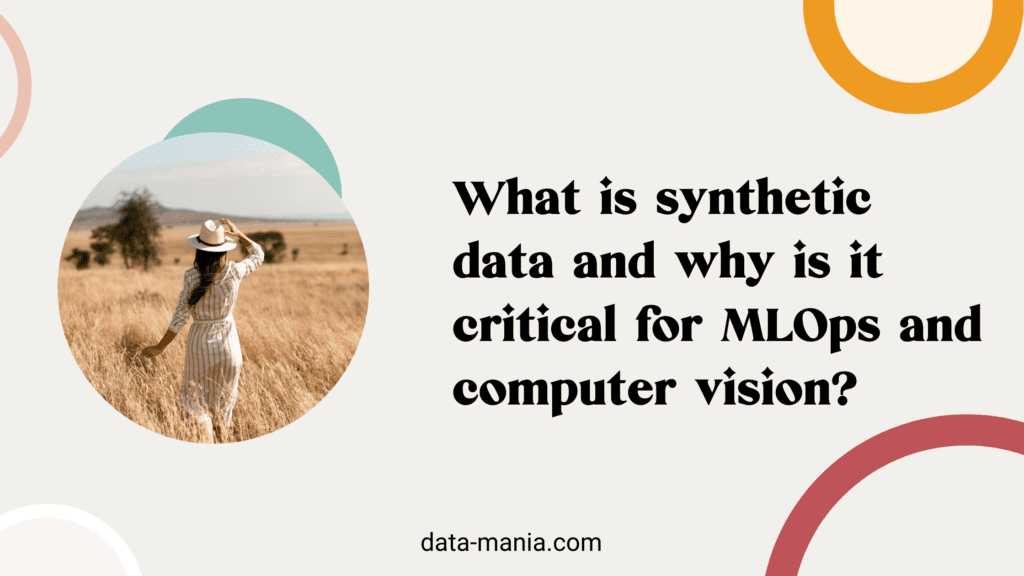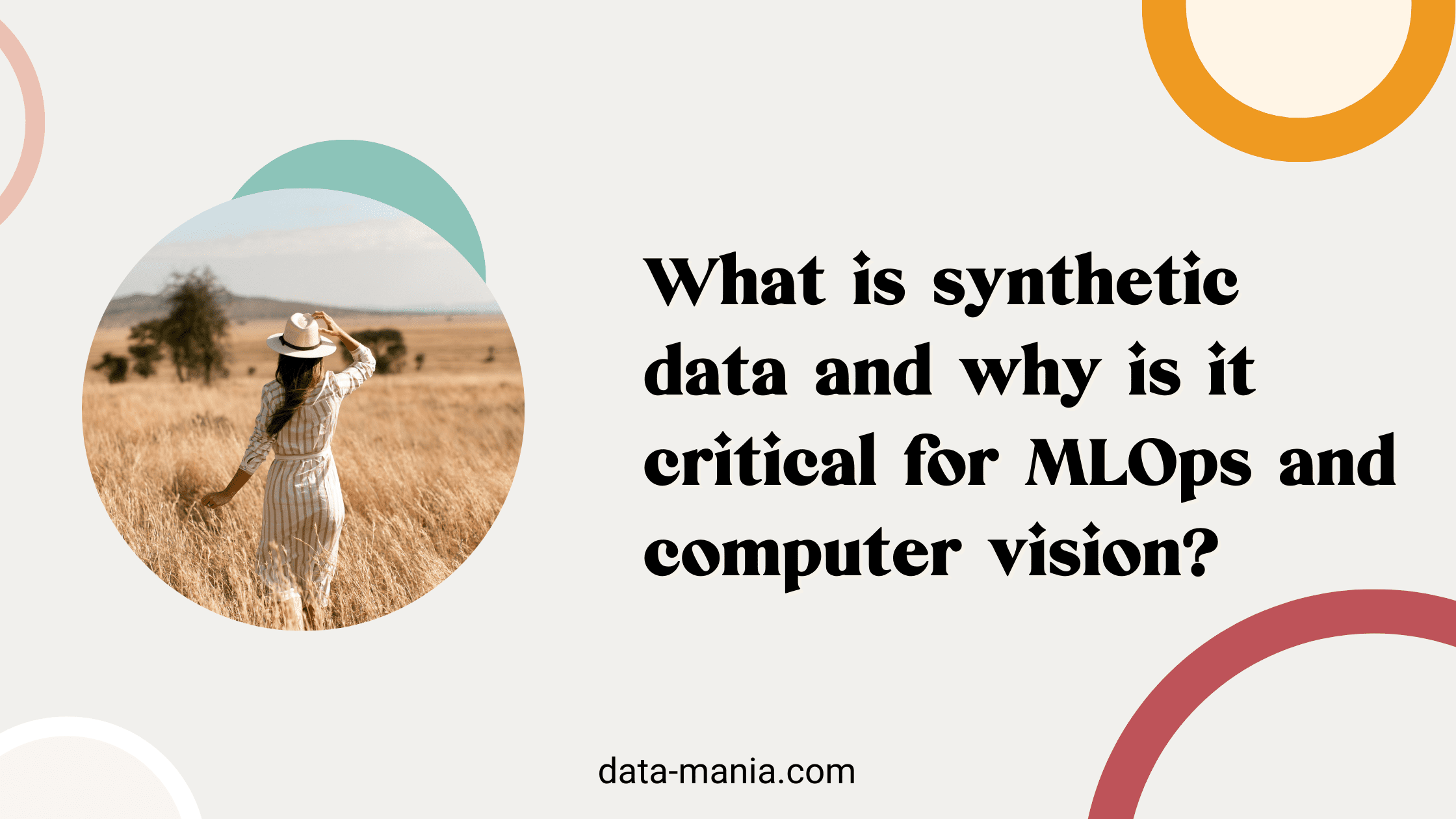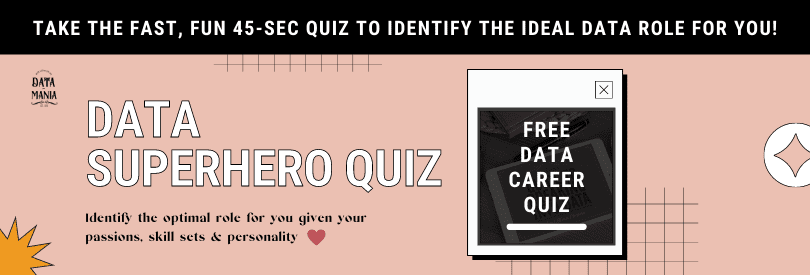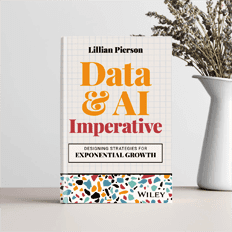In your steps towards a data-driven AI approach, this blog post will expose you to the following concepts – what is synthetic data, what is its importance to MLOps and how it could impact computer vision.

What Is Synthetic Data?
Synthetic data is information generated by a man-made process, not by real events. A variety of algorithmic and statistical methods can generate synthetic data. Training machine learning models use synthetic data as an alternative to real datasets, which can be costly and time consuming to collect.
Benefits of using synthetic data include scaling up data at low cost, creating data that adheres to specific conditions (for example covers specific edge cases), and overcoming data privacy and data protection regulations such as GDPR.
Synthetic Datasets Use Cases
Data is a critical part of any machine learning initiative. Diverse industries use synthetic data to speed up AI projects:
- Cybersecurity—synthetic data can be used to train models to detect rare events like specific cyber attack techniques.
- Automotive—synthetic data is used to create simulated environments for computer vision algorithms used in autonomous vehicles, and testing safety and collision avoidance technologies.
- Healthcare—scientists are creating synthetic genomic data that can help speed time to market for new drugs and treatments.
- Financial services—synthetic time-series data makes it possible to train algorithms on rare events and exceptions, without compromising privacy.
- Media—synthetic data can be used to train recommendation algorithms for products or content without using real customer data.
- Gaming—synthetic data is helping develop new forms of interaction including augmented reality (AR) and biometric detection.
- Retail—synthetic data can help retailers simulate how items are placed in a store, to enable better automated detection of products on a shelf.
Importance of Data-Centric AI for MLOps and ML Engineering
Machine Learning Operations (MLOps) is a set of practices for deploying and maintaining production ML models efficiently and reliably. However, there are challenges to running a model after deployment:
- Latency issues—ML engineers must consider how to run the model efficiently in production to provide a positive user experience. In some cases this can be challenging because end-user devices have limited computing power.
- Fairness and bias—bias can easily creep into ML systems if left unchecked. Constant, close inspection is essential for maintaining a system’s fairness and minimizing bias.
- Data drift—the real world is dynamic, so models trained on static data sets quickly move out of sync with changes affecting real world data.
Data-centric machine learning is an approach that keeps the ML model static while continuously improving datasets that can better simulate the real world. This approach is more effective than model-centric ML, where engineers tweak the model while training it on static data sets, which were often of low quality.
Combined with synthetic data, data-centric ML helps address the main challenges of maintaining machine learning models. Synthetic data can help prevent model bias, by augmenting data to ensure sufficient diversity and randomness. It can also minimize data drift, by ensuring training data is adaptable to changing real world conditions.
Data-centric decision-making and synthetically generated data provide major advantages for MLOps teams. Adopting data-centric ML shifts team’s focus to building data-driven pipelines that can improve AI performance by feeding models with fresh, high quality data.
How Can Synthetic Data Generation Help Computer Vision?
Collecting diverse, real-world data with the necessary characteristics when building visual data sets is often time-consuming and prohibitively expensive. Correct annotation is essential after collecting data points to ensure accurate outcomes. The data labeling process often takes months and consumes precious resources.
Synthetic data is programmatically generated data. So, there’s no need for manual collection or annotation of data. The annotations can be highly accurate and the synthetic data highly realistic, supplementing the otherwise insufficient real-world data. Synthetically generated datasets can also represent real-world diversity more accurately than some real data sets.
One popular application for computer vision is realistic image generation—research in this field has driven advances in GAN technology like the NVIDIA CycleGan, StyleGANm, and FastCUT models. These GANs can synthesize highly accurate images using only public datasets and labels as input.
A major issue with datasets sourced from the real world is the prevalence of biases. For example, sourcing rare (but possible) events may be difficult but is crucial for building an accurate image generation model. One practical example is an autonomous vehicle’s computer vision system, which must be able to predict and interpret various road conditions that may rarely occur in the real world (i.e., car accidents). Another example is visualizing rare diseases for medical imaging purposes.
Deep learning computer vision algorithms can train on synthetic images and videos (for example, car accidents in various circumstances, weather, lighting conditions, and environments). These data sets offer a fuller range of possible conditions and events, making the computer vision model more reliable and improving the safety of self-driving cars.
Conclusion
In this article, I explained the basics of synthetic data and showed how it can solve key challenges of machine learning operations:
- Bias—synthetic data can generate data that is more balanced and representative of the real world.
- Data drift—synthetic data can be easily adapted to changing real world conditions.
In addition, I described how synthetic data is transforming computer vision initiatives by enabling, for the first time, automatic creation of rich image and video data.
I hope this will be useful as you take your first steps towards a data-driven AI approach.
Hey! If you liked this post, I’d really appreciate it if you’d share the love by clicking one of the share buttons below!
A Guest Post By…
 This blog post was generously contributed to Data-Mania by Gilad David Maayan. Gilad David Maayan is a technology writer who has worked with over 150 technology companies including SAP, Samsung NEXT, NetApp and Imperva, producing technical and thought leadership content that elucidates technical solutions for developers and IT leadership.
This blog post was generously contributed to Data-Mania by Gilad David Maayan. Gilad David Maayan is a technology writer who has worked with over 150 technology companies including SAP, Samsung NEXT, NetApp and Imperva, producing technical and thought leadership content that elucidates technical solutions for developers and IT leadership.
You can follow Gilad on LinkedIn.
If you’d like to contribute to the Data-Mania blog community yourself, please drop us a line at communication@data-mania.com.







